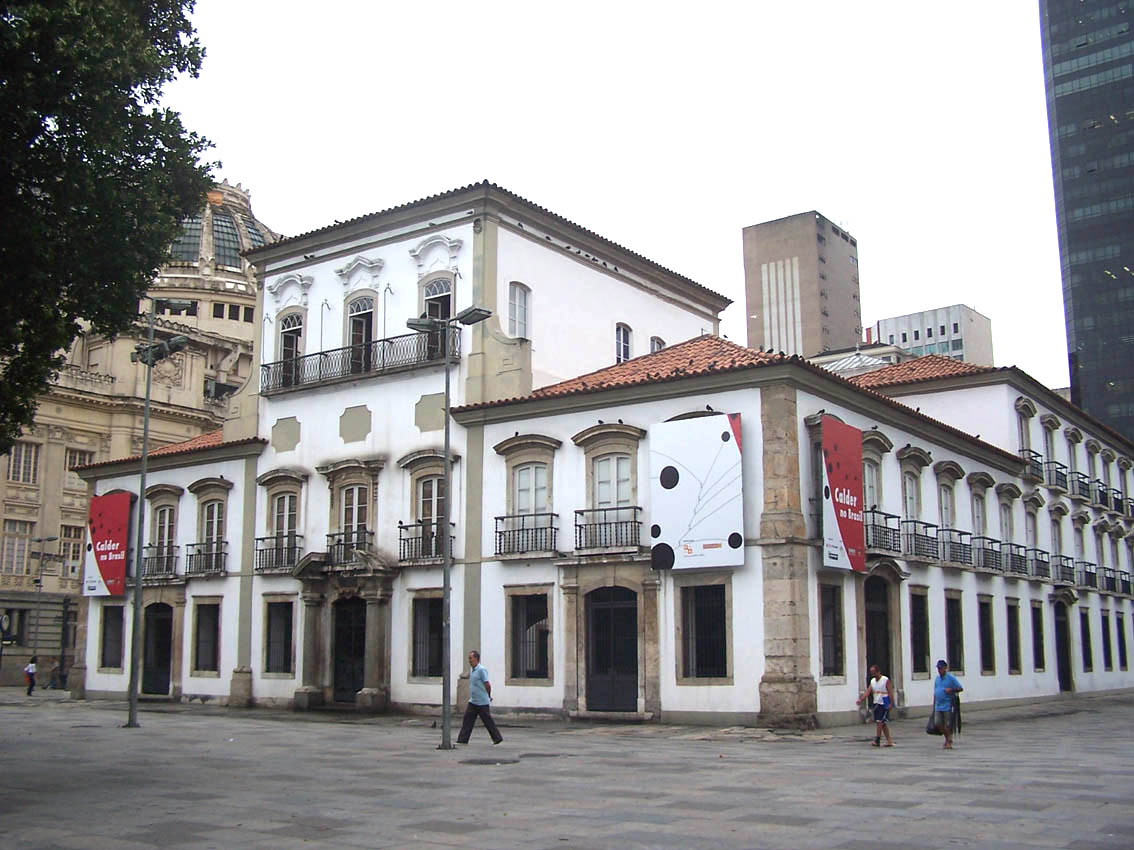- Paço Imperial
Infobox Historic building
name=Paço Imperial
caption=Main Façade of the Paço Imperial
map_type=
latitude=
longitude=
location_town=Rio de Janeiro
location_country=flagicon|BrazilBrazil
architect=José Fernandes Pinto Alpoim
client=
engineer=
construction_start_date=1738
date_demolished=
cost=
structural_system=
style=
size=The Paço Imperial (BP: IPA2|'pasu ĩpeɾi'au, EP: IPA2|'pasu ĩpɨɾi'aɫ; English: Imperial Palace) is a historic building in the centre of the city of
Rio de Janeiro , inBrazil . The Paço Imperial was built in the 18th century to serve as residence for the governors ofcolonial Brazil and was later used by King John VI of Portugal and the rulers of theEmpire of Brazil , Pedro I and Pedro II. It was one of the main political centres of Brazil for nearly 150 years, from 1743 to 1889.The Paço Imperial is located in the "Praça XV" in central Rio. Due to its architectural and historical significance, it is one of Brazil's most important historic buildings. Nowadays it serves as a cultural centre.
History
Origins
The current building was constructed by the order of Gomes Freire de Andrade, governor of the
Capitania (colonial administrative region) of Rio de Janeiro. The architect was the Portuguese military engineer José Fernandes Pinto Alpoim, a close collaborator of the governor, who greatly enlarged the existing buildings of the Royal mint and the Royal storage house which existed in the same place. This new Governor House ("Casa dos Governadores") was finished in 1743 in a plainBaroque style and, except for some details, had the same appearance as the building that exists today. The Palace, very similar to contemporary Portuguesemanor house s, has a beautiful Baroque portal made of Portuguese marble, several inner courtyards and a stairway to reach the upper storeys.The whole area beside the Governor House was also remodelled by Pinto Alpoim and turned into a spacious square (known today as "Praça XV") including a marble fountain brought from
Lisbon . On the opposite side of the square, a large residential building for the Teles de Menezes family was built (a portion of this building still exists).In 1763, as the seat of the colonial government of Brazil was transferred from Salvador to Rio de Janeiro, the building was turned into the Viceroy Palace ("Paço dos Vice-Reis"), used by the
Viceroy of Brazil as administrative centre. Around this period, the square beside the Palace gained a stone harbour and a new fountain ("Fonte de Mestre Valentim") that still exists today.Royal Palace
In 1808, when the court of
Prince Regent John VI arrived in Rio escaping the invasion ofPortugal by Napoleonic troops, the Palace became a Royal Palace ("Paço Real") where the Prince Regent (and later King) John VI used to rule the newly-named United Kingdom of Portugal, Brazil and Algarves. Around this time, a third floor was added to the central portion of the façade of the Palace, which faced the sea. At the back of the Palace, an elevated passageway was built that linked the Palace to the Carmelite Convent, where Queen Mary I of Portugal was housed. A throne room was arranged on the second floor of the Palace, where the traditional ceremony of "beija-mão" (hand kissing) took place.Imperial Palace
As Brazil became an independent nation as the
Empire of Brazil , in 1822, the Palace continued to be a centre of administrative power under Emperors Peter I and Peter II, and was renamed Imperial Palace ("Paço Imperial").Several important events of the
History of Brazil are associated with the Paço Imperial. On January 9th of 1822, from one of the balconies of the Palace facing the square, Peter I announced that he would refuse Portuguese orders and remain in independent Brazil (the so-called "Dia do Fico"). In one of the rooms of the Palace, Peter II's daughter, Princess Isabel, signed in 1888 the famous "Lei Áurea ", which definitively banned slavery from Brazil (some sources point that slavery ban was signed at a Free Masons temple at Rua Do Lavradio - Lavradio Street). Moreover, the Palace, the surrounding square and chapel were the stage of thecoronation s of John VI and the two Peters.Decadence and recovery
With the foundation of the
Republic of Brazil , in 1889, the Paço Imperial lost its former importance and was turned into the central Mail Office of Rio. The inner decoration of the rooms was dispersed, and the façades were modified. In 1980 a profound renovation returned the building to the appearance it had around 1818, a relatively easy task since an enormous number of images from the 18th and 19th centuries depict the Palace in detail.Since 1984 the Paço Imperial has been an important cultural centre, hosting temporary art exhibitions of painting, sculputure, cinema, music etc. It also hosts the Paulo Santos Library, specialising in art, architecture and engineering, containing several rare books from the 16th to the 18th centuries.
References
*
External links
* [http://www.pacoimperial.com.br/ Official site of the Paço Imperial (in Portuguese).]
* [http://www.rioon.com/bairroseatrativos/pacoimperial.htm Site with nice photos of the Palace.]
Wikimedia Foundation. 2010.
